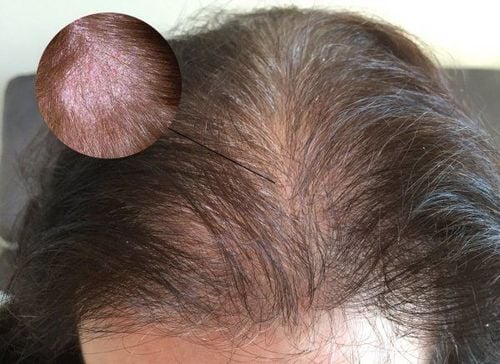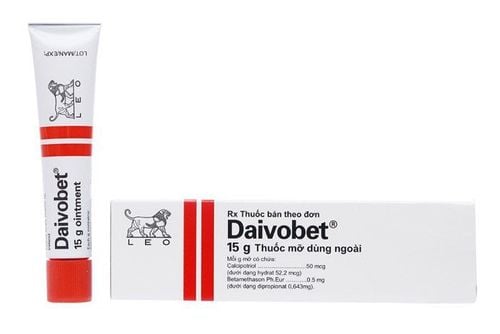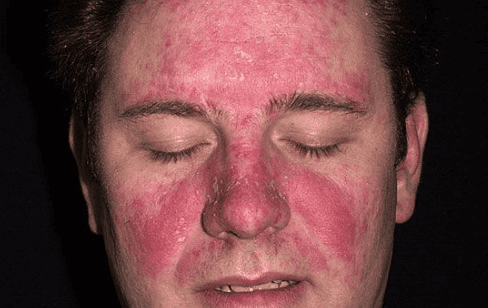This is an automatically translated article.
Salybet is a topical cream with a combination of ingredients, which helps reduce inflammation in some skin diseases with hyperkeratosis such as psoriasis. Although it is a topical drug, if used improperly, it can also cause systemic effects.1. What does Salybet do?
The main ingredients of each 10g of Salybet drug are Betamethasone dipropiona 6.4mg and salicylic acid 300mg, with just enough excipients. Betamethasone dipropionate is a synthetic corticosteroid with potent anti-inflammatory activity that produces a rapid and sustained response in inflammatory skin diseases that have responded to topical corticosteroids. In particular, Betamethasone dipropionate can also be used effectively in less responsive cases such as scalp psoriasis, chronic plaque psoriasis of the hands or feet. However, the drug is not used for extensive plaque psoriasis.
For salicylic acid, it is indicated for topical application to soften the stratum corneum (keratin), slough off keratinized epithelial cells and help exfoliate the epidermis. The salicylic acid component used in combination in Salybet helps betamethasone dipropionate penetrate into the dermis faster than betamethasone dipropionate alone. Currently, Salybet is indicated for the treatment of corticosteroid-responsive hyperkeratosis and dry skin diseases.
2. Instructions on how to use Salybet
How to use: Salybet is used by applying directly to the damaged skin.
Dosage:
Adults: Apply 1 to 2 times daily. In most cases, the drug should be used twice daily in the morning and evening for a good response. In some patients adequate maintenance therapy can be achieved with fewer visits. Children: The daily dose may be the same as for adults. Overdose:
When topical corticosteroids are used for a long time or in large amounts on a large scale, they can suppress pituitary-adrenal function, cause secondary renal failure, and have manifestations of increased cortical activity. including Cushing's syndrome. If you apply a lot and long-term products containing salicylic acid, it can cause symptoms of "salicylism", poisoning with tinnitus, vomiting and nausea... When there is an overdose, the patient needs to treat the symptoms of edema. fit. Symptoms such as acute adrenocortical hyperplasia are usually reversible and require follow-up with appropriate treatment.
3. When should Salybet not be used?
Contraindicated to use Salybet topical when:
The patient is sensitive to any component of the drug Salybet. Have rosacea, acne, perioral dermatitis, genital itching and perianal itching. Tuberculosis and most skin lesions are caused by viruses, especially herpes simplex, smallpox, and chickenpox. Salybet should not be used in cases of diaper rash, fungal or bacterial skin infections that have not been combined with appropriate antifungal or antibacterial therapy.
4. Salybet topical side effects
Salybet is used topically, so it is generally well tolerated and side effects are rare. However, if patients apply Salybet continuously without interruption, it can lead to local atrophy, dry skin, and cause dilation of blood vessels under the skin, especially on the face.
Undesirable reactions when using topical corticosteroids include: Sensation of heat, itching, irritation, folliculitis, hirsutism, acne-like rash, hypopigmentation, perioral dermatitis and allergic contact dermatitis.
Closure of lesions after application may also increase the occurrence of systemic and local undesirable effects such as: peeling, secondary infection, skin atrophy and stretch marks.
Inform the doctor about the unwanted effects that the patient encounters when using Salybet.
5. Notes when using Salybet
Salybet is a prescription drug, patients only use it exactly as prescribed by the doctor. You should tell your doctor about any history of drug allergies before taking. It is not recommended to cover the lesion after applying Salybet, because it can increase drug absorption and cause more severe systemic reactions. Salybet should be discontinued if signs of local irritation, dryness and sensitization appear. Or when the clinical signs do not improve, the drug should be stopped and examined for advice. In case of use with children and applied on the eyes, it should be used short-term, should not be used for more than 5 days. Pregnancy: The safety of topical corticosteroids in pregnancy has not been studied, and these agents should only be used during pregnancy if the benefits outweigh the risks. potential for the fetus. Salybet should not be used in large amounts or applied for a long time during pregnancy. Lactation: Since it is not known whether topical application of Salybet can cause sufficient systemic absorption to produce quantifiable concentrations in human milk, a decision should be made between discontinuing the drug or stopping breastfeeding. suck. Do not apply Salybet to the eyes, keep away from the eye area and mucous membranes. After use, it is necessary to close the lid tightly, avoid infection for the drug and store it in a dry place, out of reach of children. Above is the information about Salybet, to use it safely and effectively, patients need to use it exactly as indicated, avoid prolonged application or abuse of the drug to avoid the risk of side effects.
Please dial HOTLINE for more information or register for an appointment HERE. Download MyVinmec app to make appointments faster and to manage your bookings easily.













